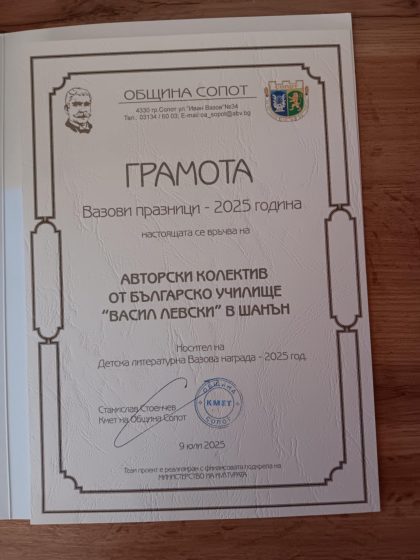DEPARTMENT OF HEALTH AND HUMAN SERVICES
Food and Drug Administration
21 CFR Part 880
[Docket No. 2004N-0477]
Medical Devices; General Hospital and Personal Use Devices;
Classification of Implantable Radiofrequency Transponder System for
Patient Identification and Health Information
AGENCY: Food and Drug Administration, HHS.
ACTION: Final rule.
––––––––––––––––––––––––
SUMMARY: The Food and Drug Administration (FDA) is classifying the
implantable radiofrequency transponder system for patient
identification and health information into class II (special controls).
The special control that will apply to the device is the guidance
document entitled „Class II Special Controls Guidance Document:
Implantable Radiofrequency Transponder System for Patient
Identification and Health Information.“ The agency is classifying the
device into class II (special controls) in order to provide a
reasonable assurance of safety and effectiveness of the device.
Elsewhere in this issue of the Federal Register, FDA is publishing a
notice of availability of a guidance document that is the special
control for this device.
DATES: This rule is effective January 10, 2005. The classification was
effective October 12, 2004.
FOR FURTHER INFORMATION CONTACT: Gail Gantt, Center for Devices and
Radiological Health (HFZ-480), Food and Drug Administration, 9200
Corporate Blvd., Rockville, MD 20850, 301-594-1287.
SUPPLEMENTARY INFORMATION:
I. Background
In accordance with section 513(f)(1) of the Federal Food, Drug, and
Cosmetic Act (the act) (21 U.S.C. 360c(f)(1)), devices that were not in
commercial distribution before May 28, 1976, the date of enactment of
the Medical Device Amendments of 1976 (the amendments), generally
referred to as postamendments devices, are classified automatically by
statute into class III without any FDA rulemaking process. These
devices remain in class III and require premarket approval, unless and
until the device is classified or reclassified into class I or II or
FDA issues an order finding the device to be substantially equivalent,
in accordance with section 513(i) of the act, to a predicate device
that does not require premarket approval. The agency determines whether
new devices are substantially equivalent to previously marketed devices
by means of premarket notification procedures in section 510(k) of the
act (21 U.S.C. 360(k)) and 21 CFR part 807 of FDA’s regulations.
Section 513(f)(2) of the act provides that any person who submits a
premarket notification under section 510(k) of the act for a device
that has not previously been classified may, within 30 days after
receiving an order classifying the device in class III under section
513(f)(1) of the act, request that FDA classify the device under the
criteria set forth in section 513(a)(1) of the act. FDA shall, within
60 days of receiving such a request, classify the device by written
order. This classification shall be the initial classification of the
device. Within 30 days after the issuance of an order classifying the
device, FDA must publish a document in the Federal Register announcing
such classification (section 513(f)(2) of the act).
[[Page 71703]]
In accordance with section 513(f)(1) of the act, FDA issued a
document on July 22, 2004, classifying the VERICHIP Health Information
Microtransponder System in class III, because it was not substantially
equivalent to a device that was introduced or delivered for
introduction into interstate commerce for commercial distribution
before May 28, 1976, or a device which was subsequently reclassified
into class I or class II. On August 4, 2004, Digital Angel Corp.
submitted a petition requesting classification of the VERICHIP Health
Information Microtransponder System under section 513(f)(2) of the act.
The manufacturer recommended that the device be classified into class
II (Ref. 1).
In accordance with section 513(f)(2) of the act, FDA reviewed the
petition in order to classify the device under the criteria for
classification set forth in section 513(a)(1) of the act. Devices are
to be classified into class II if general controls, by themselves, are
insufficient to provide reasonable assurance of safety and
effectiveness, but there is sufficient information to establish special
controls to provide reasonable assurance of the safety and
effectiveness of the device for its intended use. After review of the
information submitted in the petition, FDA determined that the VERICHIP
Health Information Microtransponder System can be classified in class
II with the establishment of special controls. FDA believes these
special controls, in addition to general controls, will provide
reasonable assurance of safety and effectiveness of the device.
The device is assigned the generic name implantable radiofrequency
transponder system for patient identification and health information
and is identified as a system intended to enable access to secure
patient identification and corresponding health information. This
system may include a passive implanted transponder, inserter, and
scanner. The implanted transponder is used only to store a unique
electronic identification code that is read by the scanner. The
identification code is used to access patient identity and
corresponding health information stored in a database.
The potential risks to health associated with the device are
adverse tissue reaction, migration of implanted transponder,
compromised information security, failure of implanted transponder,
failure of inserter, failure of electronic scanner, electromagnetic
interference, electrical hazards, magnetic resonance imaging
incompatibility, and needle stick. The special controls document aids
in mitigating the risks by identifying performance and safety testing,
and appropriate labeling.
Therefore, in addition to the general controls of the act, an
implantable radiofrequency transponder system for patient
identification and health information is subject to special controls
identified as the guidance document entitled „Class II Special
Controls Guidance Document: Implantable Radiofrequency Transponder
System for Patient Identification and Health Information.“
FDA believes that following the class II special controls guidance
document generally addresses the risks to health identified in the
previous paragraph. Therefore, on October 12, 2004, FDA issued an order
to the petitioner classifying the device into class II. FDA is
codifying this classification by adding 21 CFR 880.6300.
Section 510(m) of the act provides that FDA may exempt a class II
device from the premarket notification requirements under section
510(k) of the act, if FDA determines that premarket notification is not
necessary to provide reasonable assurance of the safety and
effectiveness of the device. FDA has determined that premarket
notification is not necessary to provide reasonable assurance of the
safety and effectiveness of the implantable radiofrequency transponder
system for patient identification and health information because the
manufacturing controls, software validation science, and electrical
safety standards in the special control guidance are well known. The
measures needed to keep patient data secure are commonly in use. Thus,
persons who intend to market this device type need not submit to FDA a
premarket notification submission containing information on an
implantable radiofrequency transponder system for patient
identification and health information, unless they exceed the
limitations on exemptions in 21 CFR 880.9 (e.g., different intended use
or fundamental scientific technology).
For the convenience of the reader, FDA is also adding new 21 CFR
880.1 to inform readers of the availability of guidance documents
referenced in 21 CFR part 880.
II. Environmental Impact
The agency has determined under 21 CFR 25.34(b) that this action is
of a type that does not individually or cumulatively have a significant
effect on the human environment. Therefore, neither an environmental
assessment nor an environmental impact statement is required.
III. Analysis of Impacts
FDA has examined the impacts of the final rule under Executive
Order 12866, the Regulatory Flexibility Act (5 U.S.C. 601-612), and the
Unfunded Mandates Reform Act of 1995 (Public Law 104-4). Executive
Order 12866 directs agencies to assess all costs and benefits of
available regulatory alternatives and, when regulation is necessary, to
select regulatory approaches that maximize net benefits (including
potential economic, environmental, public health and safety, and other
advantages; distributive impacts; and equity). The agency believes that
this final rule is not a significant regulatory action under the
Executive order.
The Regulatory Flexibility Act requires agencies to analyze
regulatory options that would minimize any significant impact of a rule
on small entities. Because classification of these devices into class
II will relieve manufacturers of the device of the cost of complying
with the premarket approval requirements of section 515 of the act (21
U.S.C. 360e), and may permit small potential competitors to enter the
marketplace by lowering their costs, the agency certifies that the
final rule will not have a significant impact on a substantial number
of small entities.
Section 202(a) of the Unfunded Mandates Reform Act of 1995 requires
that agencies prepare a written statement, which includes an assessment
of anticipated costs and benefits, before proposing „any rule that
includes any Federal mandate that may result in the expenditure by
State, local, and tribal governments, in the aggregate, or by the
private sector, of $100,000,000 or more (adjusted annually for
inflation) in any one year.“ The current threshold after adjustment
for inflation is $110 million. FDA does not expect this final rule to
result in any 1-year expenditure that would meet or exceed this amount.
IV. Federalism
FDA has analyzed this final rule in accordance with the principles
set forth in Executive Order 13132. FDA has determined that the rule
does not contain policies that have substantial direct effects on the
States, on the relationship between the National Government and the
States, or on the distribution of power and responsibilities among the
various levels of government. Accordingly, the agency has concluded
that the rule does not contain policies that have federalism
implications as defined in the Executive order and, consequently, a
federalism summary impact statement is not required.
[[Page 71704]]
V. Paperwork Reduction Act of 1995
This final rule contains no collections of information. Therefore,
clearance by the Office of Management and Budget under the Paperwork
Reduction Act of 1995 is not required.
VI. Reference
The following reference has been placed on display in the Division
of Dockets Management (HFA-305), Food and Drug Administration, 5630
Fishers Lane, rm. 1061, Rockville, MD 20852, and may be seen by
interested persons between 9 a.m. and 4 p.m., Monday through Friday.
1. Petition from Digital Angel Corp., dated August 4, 2004.
List of Subjects in 21 CFR Part 880
Medical devices.
0
Therefore, under the Federal Food, Drug, and Cosmetic Act and under
authority delegated to the Commissioner of Food and Drugs, 21 CFR part
880 is amended as follows:
PART 880–GENERAL HOSPITAL AND PERSONAL USE DEVICES
0
1. The authority citation for 21 CFR part 880 continues to read as
follows:
Authority: 21 U.S.C. 351, 360, 360c, 360e, 360j, 371.
0
2. Section 880.1 is amended by adding new paragraph (e) to read as
follows:
Sec. 880.1 Scope.
* * * * *
(e) Guidance documents referenced in this part are available on the
Internet at http://frwebgate.access.gpo.gov/cgi-bin/leaving.cgi?from=leavingFR.html&log=linklog&to=http://www.fda.gov/cdrh/guidance.html.
0
3. Section 880.6300 is added to subpart G to read as follows:
Sec. 880.6300 Implantable radiofrequency transponder system for
patient identification and health information.
(a) Identification. An implantable radiofrequency transponder
system for patient identification and health information is a device
intended to enable access to secure patient identification and
corresponding health information. This system may include a passive
implanted transponder, inserter, and scanner. The implanted transponder
is used only to store a unique electronic identification code that is
read by the scanner. The identification code is used to access patient
identity and corresponding health information stored in a database.
(b) Classification. Class II (special controls). The special
control is FDA’s guidance document entitled „Class II Special Controls
Guidance Document: Implantable Radiofrequency Transponder System for
Patient Identification and Health Information.“ See Sec. 880.1(e) for
the availability of this guidance document. This device is exempt from
the premarket notification procedures in subpart E of part 807 of this
chapter subject to the limitations in Sec. 880.9.
Dated: November 30, 2004.
Linda S. Kahan,
Deputy Director, Center for Devices and Radiological Health.
[FR Doc. 04-27077 Filed 12-9-04; 8:45 am]
BILLING CODE 4160-01-S
Източник: http://gangologist.com/?p=91







30 юни 2009, вторник
RFID Чиповете – Технологията, която ще унищожи човечеството
(Технология 666 – Исус или Сатаната: вие избирате)
Може би се питате какво всъщност е RFID?
Вие дори не го осъзнавате, но RFID технологията е навсякъде около нас – използва се в паспортите, в дебитните карти, в кредитните карти, в картите за метрото и в ключовете за кола.
RFID ( Radio Frequency identification) означава радиочестотна идентификация. Подобно на обичайните баркодове RFID– чиповете съхраняват и предават информация.
“Маркирането” на хора в САЩ беше одобрено от Комисията по храни и лекарства през 2004 година, като трябваше да улесни обработката на персоналната медицинска информация, но процедурата намери и други приложения. Засега тя все още е напълно доброволна, а преди месец губернаторът на Калифорния Арнолд Шварценегер подписа законопроект, който забранява на работодателите да принуждават работниците си да си имплантират микрочипове за радиочестотна идентификация като условие за получаване на заплата или държавни помощи.
Един от създателите на този микрочип е Карл Сандърс.
100 души участват в проекта – от General Electric, Motorola, Bell Laboratories, Boston Medical Center, Stamford University.
Той е ръководител на проекта.
Хора от ФБР и ЦРУ са възложителите на този проект.
Това не е научна фантастика, а е съвсем истинско: ако не вярвате, вижте рекламите, които вече се излъчват по американските телевизии.
ТАЗИ ТЕХНОЛОГИЯ Е ВЕЧЕ В ДЕЙСТВИЕ!
Самият Карл Сандърс, който е ръкoводител на проекта, отрича тази технология (следва неговото твърде сериозно и безкомпромисно предупреждение):
“Като християнин ви казвам: тази технология идва от тъмните сили.
Ако имате Библия във вашия дом и отворите на “Oткровението на Йоан” – последната книга от Библията – ще видите защо се опитвам да ви кажа, че този чип ще погуби завинаги вашата душа.
Хората от правителството, които възлагат проекта, искат този микрочип да приема и да излъчва сигнал,като използва литиева батерия. Литият се използва в батериите на часовниците, в батериите на пейсмейкърите. В микрочипа има намотка, която захранва тази батерия. Това е от техническа гледна точка.
За да може тази батерия да се зарежда, трябва да настъпи промяна в температурата на тялото, за да задейства намотката, която да зареди батерията на микрочипа.
Двете места, в които рязко се сменя температурата на тялото, са на челото под бритона и в ръката – и по-точно – дясната, защото повечето хора са десничари.
Цитат от Библията:
„16. И той ще направи, щото на всички – малки и големи, богати и сиромаси, свободни и роби – да се даде белег на дясната им ръка или на челата им,
17.та никой да не може нито да купува, нито да продава, освен оня, който има тоя белег, или името на звяра, или числото на името му.
18. Тук е мъдростта. Който има ум, нека пресметне числото на звяра, понеже е число на човек, и числото му е шестотин шейсет и шест.“
(Откровение 13:16-18)
Думата белег идва от гръцки – чарагма, стигма, а числото на звяра е 666. Точно за това става дума в Библията.
ХОРА, СЪБУДЕТЕ СЕ!
Няма значение колко пари имате, колко сте успели, колко сте известни.
Ако не се покаете за вашите грехове и ако не допуснете Исус Христос във вашите сърца, няма да намерите място в Рая и ще страдате от неописуемите мъки в Ада, защото сте допуснали злото да ви заслепи.
Не знам дали осъзнавате, но ние живеем в последните години на този свят. Ако се покаете за всичкото зло, което сте сторили, простите на онези, които ви мразят, и ако бягате от тази сатанинска технология, ще спасите вашата душа и Господ ще се погрижи за вас. Защото е казано, че който приеме белега на звяра – именно този сатаниски чип – ще си навлече Божия гняв и е обречен завинаги: няма връщане назад.
Като християнин ви казвам: този чип е зло и ще ви погуби, затова независимо в какво ви убеждават и кой ви убеждава – не го приемайте.
Като човек, който се занимава с технология от малко момче, ви казвам:
всяко нещо с алгоритъм, което се внедрява, не се прави просто така.
Ако приемете този чип, вие ще сте като полужив робот – няма да сте същият човек, но няма да има връщане назад.
Господ да ви пази. Амин!”
(Текстът е коригиран, допълнен и редактиран от Ник – поради многобройните грешки, неточности в превода и в пунктуацията, допуснати от преводача).